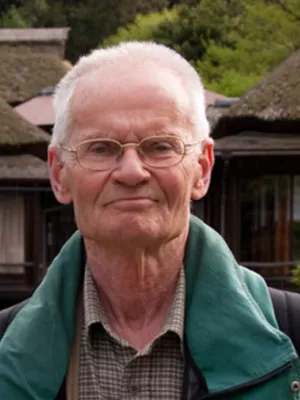
Björn Berglund
Professor emeritus

Holocene palaeoecology along the Blekinge coast, SE Sweden, and implications for climate and sea-level changes
Författare
Summary, in English
To investigate the Holocene vegetation history and shoreline displacement along the southeastern Swedish coast, two radiocarbon dated pollen, macrofossil and mineral magnetic sequences were studied in the western Blekinge coast: Hunnemara Lake and Smygen Bay. Both pollen records show mosaic vegetation with grasslands, heaths and woodlands prior to 11 300 cal. BP. Pinus-dominated mixed forest was initially established by 11 000 cal. BP. By 10 000 cal. BP, mixed forest with higher species diversity was fully established. Expansion of broad-leaved trees began at about 8600 cal. BP, indicating the onset of the mid-Holocene thermal maximum in Scandinavia. Following the Ulmus decline similar to 5800 cal. BP, the regional forest became much more open due to increased human disturbance. Both basins were isolated during the period of 11 300-11 000 cal. BP, and subsequently in contact with the Ancylus Lake between 10 700 and 9800 cal. BP. Low abundance of brackish-water diatoms at Smygen suggests that this basin was connected with the Baltic Sea between 9800 and 8600 cal. BP, corresponding to the Early Littorina Sea phase. Hunnemara was isolated during this period. The two basins were in turn flooded at 8600 and 8300 cal. BP, as a result of global sea-level rise. A sedimentary hiatus (8300-7500 cal. BP) was present at Hunnemara, probably caused by a rapid sea-level rise related to global meltwater pulse 3. Aquatic macrofossil and mineral magnetic proxies reveal several minor transgressions at both sites, probably regulated by centennial-scale variations in regional storminess. Hunnemara was isolated from the Baltic Basin by 3100 cal. BP, concurrent with a lowering of the sea level at Smygen.
Avdelning/ar
- Kvartärgeologi
Publiceringsår
2005
Språk
Engelska
Sidor
278-292
Publikation/Tidskrift/Serie
The Holocene
Volym
15
Issue
2
Dokumenttyp
Artikel i tidskrift
Förlag
SAGE Publications
Ämne
- Geology
Nyckelord
- sea-level change
- Littorina transgression
- Sweden
- Baltic Sea
- Holocene
- mineral magnetism
- pollen
- macrofossils
- change
- climate
- vegetation history
Status
Published
ISBN/ISSN/Övrigt
- ISSN: 0959-6836

